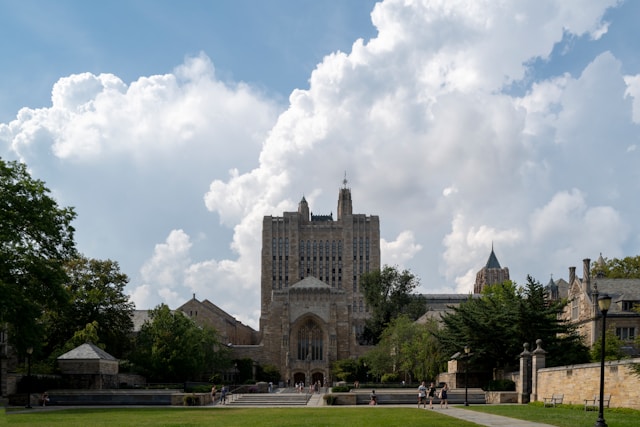Living in Connecticut offers a blend of New England charm and financial reality that potential residents need to understand. The state ranks as the 14th most expensive place to live in the United States, with a cost of living around $2,475 per month – which is 1.12 times higher than the national average. Connecticut’s elevated expenses appear in everything from housing (with a median home price of $262,400) to groceries, transportation, and healthcare, all exceeding national averages.
Connecticut’s financial landscape continues to evolve, with the state minimum wage set to reach $16.35 per hour in 2025, reflecting efforts to address the high living costs. While the average after-tax salary of $4,670 technically covers monthly expenses, many middle-income residents report difficulty saving money due to the persistent high costs. Before relocating to this picturesque northeastern state, travelers and potential residents should carefully consider how these financial realities align with their budgets and lifestyle expectations.
Get a discount of 15% to 70% on accommodation in Connecticut! Look for deals here:
Connecticut Hotels, Apartments, B&Bs
Housing and Utility Costs
Connecticut ranks among the more expensive states for housing, with significant variation between affluent coastal towns and more affordable inland areas. The state’s utility costs offer some relief compared to national averages, though they still represent a substantial portion of monthly expenses.
Rental Market Analysis
Connecticut’s rental market varies dramatically by location. In Fairfield County, particularly in upscale communities like Greenwich and Stamford, rental prices often exceed national averages by substantial margins. A one-bedroom apartment in Stamford typically costs between $1,800-2,200 monthly, while Greenwich commands even higher prices.
More affordable rental options exist in cities like Meriden, where housing costs are the lowest in the state. The statewide average for a two-bedroom rental is approximately $1,660 per month, which exceeds the national average by about 16%.
Seasonal rentals in coastal communities see significant price fluctuations, with summer months commanding premium rates. Many properties require first and last month’s rent plus security deposit, creating a substantial upfront cost for new renters.
Home Ownership Expenses
Connecticut’s median home value sits at approximately $362,100, which is 7.1% higher than the national average. However, this figure masks extreme variations across the state.
In affluent areas like Ridgefield, Orange, and Greenwich, home prices can easily reach millions of dollars. Greenwich, in particular, has some of the most expensive housing prices in the nation, with median values exceeding $1 million.
Property taxes add significantly to homeownership costs in Connecticut, with rates varying by municipality. Most towns impose property taxes between 1.5% and 2.5% of assessed value.
Homeowners insurance runs higher than national averages due to coastal exposure, aging housing stock, and severe winter weather considerations. Flood insurance represents an additional expense for coastal and riverside properties.
Utilities Overview
Connecticut residents enjoy electricity costs that are somewhat lower than the national average. The typical monthly electric bill runs approximately $97.15, compared to $135.25 nationwide.
Heating costs vary seasonally, with winter months bringing significant expenses. Many homes rely on heating oil or natural gas, with average heating bills running $200-300 monthly during winter.
Water and sewer charges are typically reasonable compared to other Northeast states, averaging $40-60 monthly for a typical household. Internet and cable packages generally start around $60-80 monthly for basic service.
Total utility costs for Connecticut residents average around $496 per month, which includes electricity, heating, cooling, water, and garbage services. Energy-efficient homes can substantially reduce these expenses, particularly important given Connecticut’s seasonal temperature extremes.
Daily Living and Transportation
Living in Connecticut means dealing with specific costs for everyday needs and getting around. These expenses vary depending on where you live in the state, with some areas being more affordable than others.
Food and Grocery Spending
Connecticut residents spend about 3% less on groceries than the national average, making this expense relatively manageable. The average monthly grocery cost for a single person is approximately $324, which is reasonable compared to other New England states.
Cities like New Haven and Hartford offer diverse shopping options, from farmers’ markets to discount stores. Local options include:
- Regional grocery chains like Stop & Shop and Big Y
- Farmers’ markets in most towns (seasonal)
- Warehouse clubs like Costco in larger cities
- Specialty food stores in affluent areas like Norwalk
Food costs are higher in southwestern Connecticut near New York, while northern areas tend to be more affordable. Many residents save by shopping across state lines where taxes might be lower.
Healthcare and Childcare Costs
Healthcare in Connecticut is considerably higher than the national average. Monthly healthcare costs average around $536 per person, reflecting the state’s quality medical facilities.
Insurance premiums in Connecticut rank among the highest in the nation, with top-tier coverage available through:
- Yale New Haven Health System
- Hartford Healthcare
- Stamford Health
Childcare is particularly expensive, with annual costs averaging $12,340 per child. This high expense significantly impacts family budgets throughout the state.
For families with children, these costs can be offset somewhat by the state’s excellent public education system, particularly in towns like Glastonbury, Avon, and West Hartford.
Transportation Expenses
Getting around in Connecticut can be costly, with monthly transportation expenses averaging $354 for a single person. The state’s location between Boston and New York contributes to higher fuel prices than the national average.
Public transportation options include:
- Metro-North Railroad: Connecting southwestern Connecticut to New York City
- CT Transit: Bus services in Hartford, New Haven, and other cities
- Shore Line East: Train service along the coastline
- CTfastrak: Bus rapid transit in the Hartford area
Car ownership remains essential in most parts of the state, especially in suburban and rural areas. Commuters in Fairfield County face some of the highest transportation costs due to rail fares and traffic congestion.
Taxation in Connecticut
Connecticut’s tax structure adds significantly to the cost of living. The state has a progressive income tax ranging from 3% to 6.99%, with higher earners paying the upper rates.
Property taxes in Connecticut are notably high, varying by municipality but typically exceeding national averages. Towns like Greenwich and Westport have high property values but relatively lower tax rates compared to cities like Hartford.
Other significant taxes include:
- Sales tax of 6.35% on most purchases
- Additional luxury taxes on certain items
- Vehicle property tax assessed annually
Despite these high taxes, residents benefit from strong public services, excellent schools, and well-maintained infrastructure throughout most communities in the state.
Get a discount of 15% to 70% on accommodation in Connecticut! Look for deals here:
Connecticut Hotels, Apartments, B&Bs








